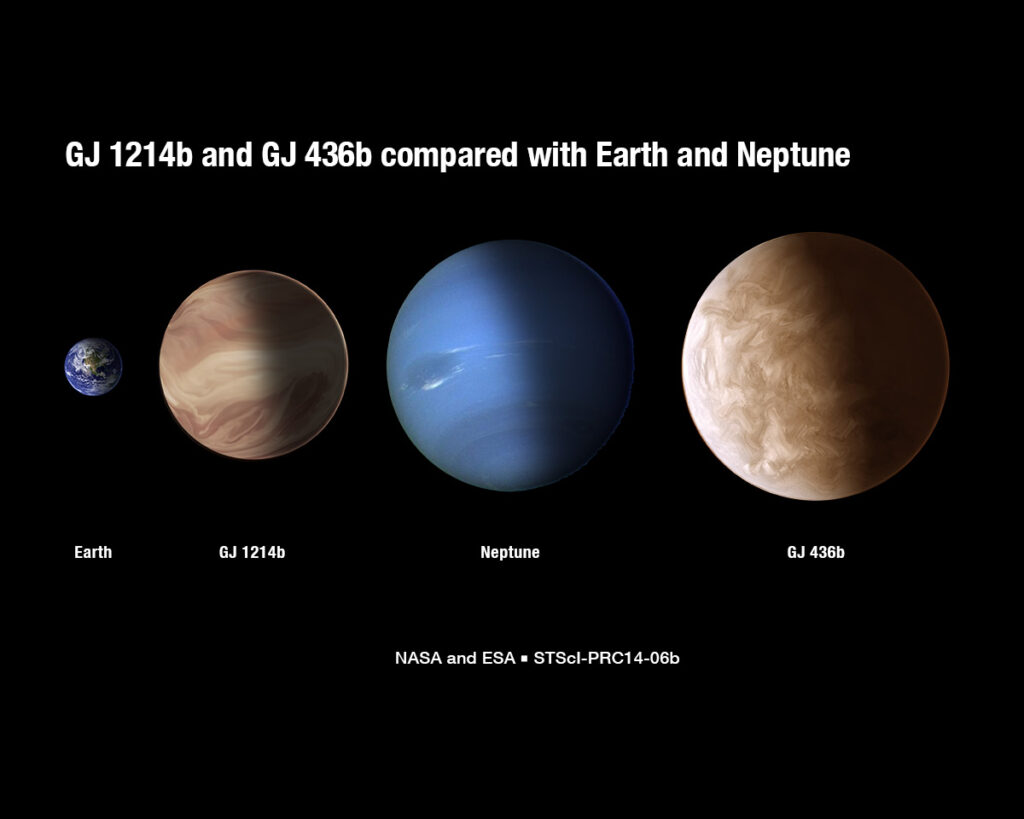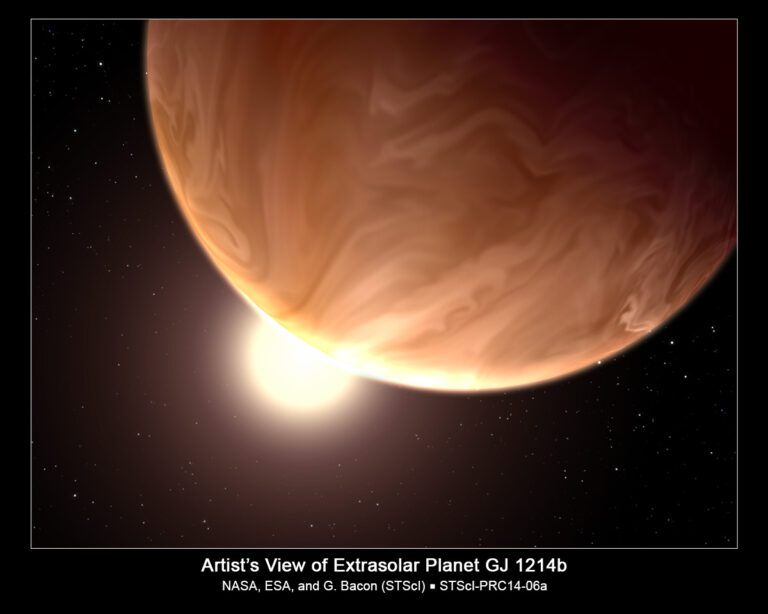Scientists utilize the Hubble Telescope to unveil atmospheric clouds on an extraterrestrial planet
A group of scientists, led by researchers from the University of Chicago’s Department of Astronomy and Astrophysics, have made a significant breakthrough in characterizing the atmosphere of a super-Earth class planet orbiting a distant star. This planet, known as GJ1214b, falls into the category of super-Earths due to its mass being between that of Earth and Neptune. Recent studies on exoplanets have revealed that super-Earths like GJ1214b are quite common in our Milky Way galaxy. However, since we do not have any such planets in our own Solar System, there is still much to learn about their physical properties.
Previous investigations into GJ1214b’s atmosphere presented two possible scenarios. It could either be composed entirely of water vapor or some other heavy molecule, or it could have high-altitude clouds that obstruct our view of what lies beneath. However, a team of astronomers, led by Laura Kreidberg and Jacob Bean from the University of Chicago, have now detected clear evidence of clouds in GJ1214b’s atmosphere using data collected from the Hubble Space Telescope. This research involved an extensive 96-hour observation period spread over 11 months, making it the most comprehensive study of a single exoplanet ever conducted using the Hubble telescope.
The findings of this study mark an important milestone in our quest to identify potentially habitable, Earth-like planets beyond our Solar System. The research results have been published in the January 2 issue of the prestigious journal Nature.

Kreidberg, the primary author of the new paper, emphasized the groundbreaking nature of their measurement, stating that they pushed the boundaries of what is achievable with the Hubble telescope. This significant advancement serves as a basis for studying other Earth-like planets using similar techniques.
Bean, the project’s principal investigator, expressed his enthusiasm for utilizing the Hubble telescope, which was not originally designed for such observations. He highlighted the precision and accuracy with which they were able to study a small planet orbiting a distant star, ultimately uncovering valuable information about its properties.
GJ 1214b, located in the constellation Ophiuchus, is a super-Earth that is conveniently close to our solar system and orbits a relatively small host star. This proximity and the planet’s size make it easily observable. Its regular transits in front of its parent star provide scientists with the opportunity to analyze its atmosphere by studying the starlight that passes through it.
To precisely measure the spectrum of GJ 1214b in near-infrared light, Kreidberg, Bean, and their team utilized the Hubble telescope. Their findings revealed conclusive evidence of high clouds enveloping the planet, which unfortunately obscures any information about the composition and behavior of its lower atmosphere and surface.
The discovery of GJ 1214b was made in 2009 by the MEarth Project, which monitors thousands of red dwarf stars for transiting planets. Subsequent observations were conducted to further understand the planet’s atmosphere. The initial spectra, obtained by Bean in 2010 using a ground-based telescope, indicated that the planet’s atmosphere was likely dominated by either water vapor or hydrogen, with the presence of high-altitude clouds.
In 2012 and 2013, the team conducted more precise observations using the Hubble telescope, which enabled them to differentiate between two possible scenarios. However, the news primarily focuses on what they did not discover. The Hubble spectra analysis showed no traces of any chemicals in the planet’s atmosphere. As a result, the astronomers were able to eliminate the possibility of cloud-free atmospheres consisting of water vapor, methane, nitrogen, carbon monoxide, or carbon dioxide.
Based on the new data, the most plausible explanation is that there are high-altitude clouds present in the planet’s atmosphere, although their composition remains unknown. According to models of super-Earth atmospheres, these clouds could potentially be composed of potassium chloride or zinc sulfide due to the scorching temperatures of approximately 450 degrees Fahrenheit on GJ 1214b. Kreidberg mentioned that the formation of clouds on this planet would differ significantly from those on Earth.
Looking ahead, Kreidberg expressed that the launch of NASA’s upcoming 6.5m James Webb Space Telescope (JWST) later in this decade will provide further insights into such celestial bodies. She emphasized that the JWST will have transformative capabilities, allowing scientists to observe beyond the clouds on planets like GJ 1214b. Moreover, it may also pave the way for studying Earth-like planets orbiting nearby stars.
This article is republished from PhysORG under a Creative Commons license. Read the original article.
Do not forget to share your opinion with us to provide you with the best posts !




0 Comments